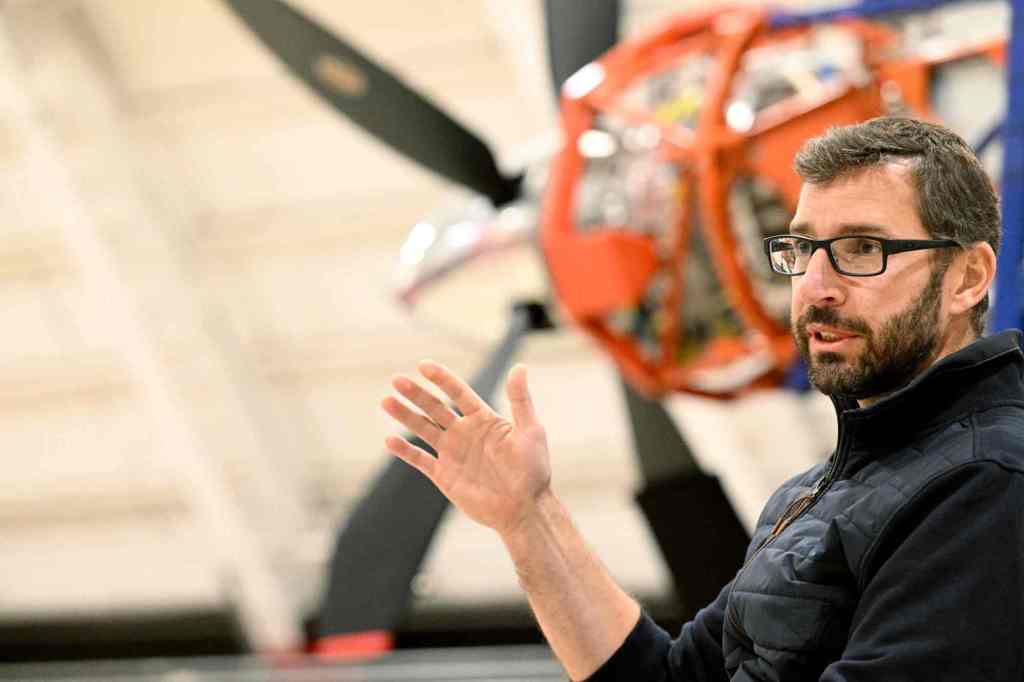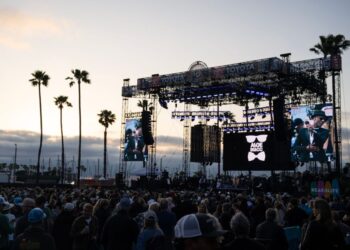Beyond a splashy paint job that included a big “H” on the tail, the 40-passenger turboprop jet that took off mid-morning March 2, from a small airport in central Washington, looked like any other regional airliner.
But with that 15-minute demonstration flight, with two test pilots and one flight crew member onboard, a three-year-old startup in Hawthorne made history while providing a glimpse of a potential future with quieter, carbon-free air travel.
Universal Hydrogen, which counts Harrison Ford as a hangar neighbor at Hawthorne Municipal Airport, replaced the jet’s right turbine engine with a 1-megawatt powertrain fueled entirely by a hydrogen fuel cell. Fuel cells operate similarly to electric batteries but are much lighter, which is key for flight. And rather than needing to be recharged, fuel cells are fed energy-rich hydrogen gas to generate electricity, emitting only water vapor along the way.
The company’s March 2 test flight broke records for the largest plane to ever take to the skies and cruise primarily on hydrogen, shattering a record set in January as another California-based startup, ZeroAvia, flew a 19-passenger airliner over England.
As bigger and bigger planes operate off such systems, hydrogen fuel cells increasingly are looking like feasible options to help the aviation sector clean up its act.
“This technology has the potential to be a game-changer on the industry’s path to zero-emission flight,” said Derek Kerr, financial chief for American Airlines, which — along with Airbus Ventures, GE Aviation and Toyota Ventures — is an early investor in Universal Hydrogen.
Aviation is responsible for more than 2% of the world’s annual carbon emissions, with air travel projected to grow significantly over coming years. While sectors that produce more carbon, such as road travel, are on track to make tremendous strides in emissions reductions, technical and safety hurdles have so far prevented some of the same solutions from…
Read the full article here







